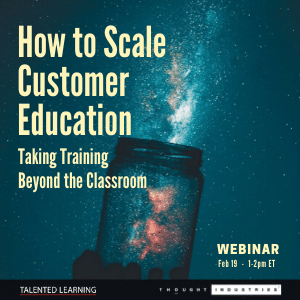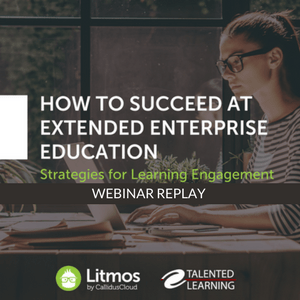Cecile White
I am Cecile White.I'm a Curriculum Developer at ManTech International Corporation on around North Charleston, SC
Wednesday, 24 June 2020
President Trump Robot Speech - Parody
Source From: https://youtu.be/FH19J-q2hMg
President Trump Robot Speech - with Lincoln, Washington, Obama. This is a parody from the audio from Donald Trump's Tulsa, Oklahoma rally speech. Original Editor: Steven Rosenthal Editor Twitter: https://twitter.com/Rosenthaltweets Editor Website: https://stevenrosenthal.net
President Trump Robot Speech - with Lincoln, Washington, Obama....
President Trump Robot Speech - with Lincoln, Washington, Obama. This is a parody from the audio from Donald Trump’s Tulsa, Oklahoma rally speech. Original Editor: Steven Rosenthal Editor Twitter: https://twitter.com/Rosenthaltweets Editor Website: https://stevenrosenthal.net
Monday, 30 March 2020
► A2 Hosting (Free Moodle LMS): https://bit.ly/a2hosting-3 ►...
► A2 Hosting (Free Moodle LMS): https://bit.ly/a2hosting-3 ► Kinsta Hosting: https://bit.ly/kinsta-yt ► Another Great Host (Free Moodle LMS on Cloud): https://bit.ly/cloudhost-yt ► LearnDash: https://www.learndash.com YouTube Channel - https://www.youtube.com/WesDavis Instagram - https://www.instagram.com/wessness/ Distance Learning - How to Make an Online Classroom Platform that can support an entire organization with thousands of users. Don’t forget to Subscribe! ***COMMENT BELOW***
Distance Learning: How to Make Your Own Online Classroom Platform ($3+)
Source From: https://youtu.be/jdqvpa2Z33A
► A2 Hosting (Free Moodle LMS): https://bit.ly/a2hosting-3 ► Kinsta Hosting: https://bit.ly/kinsta-yt ► Another Great Host (Free Moodle LMS on Cloud): https://bit.ly/cloudhost-yt ► LearnDash: https://www.learndash.com YouTube Channel - https://www.youtube.com/WesDavis Instagram - https://www.instagram.com/wessness/ Distance Learning - How to Make an Online Classroom Platform that can support an entire organization with thousands of users. Don't forget to Subscribe! ***COMMENT BELOW***
Sunday, 15 March 2020
Empty Shelves? Coronavirus Panic? In this video, we will discuss...
Empty Shelves? Coronavirus Panic? In this video, we will discuss the COVID-19 panic and what you should do to prepare for the coronavirus while the grocery stores shelves are empty. People online are price gouging and selling hand sanitizer and disinfectant sprays at extremely inflated prices due to the fear and panic. Many people are literally hording products while trying to turn a massive profit. We will make a DIY disinfecting hand sanitizer from products that have likely not sold out and are still available to the public. Also, we will be making a disinfectant spray that you can use at home that is not only safe to use on most items, but is also safe to use on yourself or your hands. This DIY project will result in usable disinfectants that are more than 60% alcohol by volume. These disinfectants are more effective against killing viruses than many of the products available in stores. Don’t forget to Subscribe! Follow Me on Instagram: https://www.instagram.com/wessness/ ***COMMENT BELOW***
Empty Shelves COVID-19 Panic (What You Should Do) *DIY Hand Sanitizer
Source From: https://youtu.be/KPHcYbR4LaA
Empty Shelves? Coronavirus Panic? In this video, we will discuss the COVID-19 panic and what you should do to prepare for the coronavirus while the grocery stores shelves are empty. People online are price gouging and selling hand sanitizer and disinfectant sprays at extremely inflated prices due to the fear and panic. Many people are literally hording products while trying to turn a massive profit. We will make a DIY disinfecting hand sanitizer from products that have likely not sold out and are still available to the public. Also, we will be making a disinfectant spray that you can use at home that is not only safe to use on most items, but is also safe to use on yourself or your hands. This DIY project will result in usable disinfectants that are more than 60% alcohol by volume. These disinfectants are more effective against killing viruses than many of the products available in stores. Don't forget to Subscribe! Follow Me on Instagram: https://www.instagram.com/wessness/ ***COMMENT BELOW***
Wednesday, 5 February 2020
Podcast 33: Training ROI in Action – With Ajay Pangarkar
WELCOME TO EPISODE 33 OF THE TALENTED LEARNING SHOW
To find out more about this podcast series or to see the full collection of episodes visit The Talented Learning Show main page.
EPISODE 33 – TOPIC SUMMARY AND GUEST:
If you want to communicate with business leaders about the value of learning programs or technology, training ROI can be a powerful tool. But if you’re not entirely sure what that term means, today’s podcast is for you.

Ajay is an accomplished author, instructor and consultant with credentials in both finance and learning. And today, he shares some of his most useful advice and examples with us.
KEY TAKEAWAYS:
- Every learning practitioner can benefit from understanding business and financial fundamentals – regardless of whether your programs serve internal or external audiences.
- It’s not necessary for learning specialists to be experts in corporate finance. But basic knowledge can give you the competence and confidence to work more effectively.
- As other organizational functions rely more heavily on data analysis to inform their decisions and improve their impact, expectations for increased business fluency in L&D are also on the rise.
Q&A HIGHLIGHTS:
We both focus on the intersection of business and learning, but we come at it from different angles. What led you down this path?
Like many people of a certain generation, I got into training by accident. Originally, I wanted to go into investment banking. So I went to university and studied finance and accounting. Then to my dismay, they told me I was too old to get into currency trading.
So I started a small business training company where I taught startup management teams how to understand business concepts in finance, accounting and marketing. That’s when I pursued a CPA designation here in Canada.
Now fast forward 20-plus years. I was so involved in training, I decided to get a graduate degree in adult education.
I see…
Around that same time, the training ROI movement started ramping up. So I started reading all the books I could find on this topic. And I could see that it was leading people down a bad path because it didn’t communicate ROI in terms that business leaders want.
How so?
When L&D people spoke with business leaders about training ROI, there were clearly two different mindsets and two different languages. So I decided to focus on the truth as a foundation for training ROI. And that foundation is based on finance and accounting rules that business leaders know.
As you can imagine, this has been controversial. But my goal isn’t to make L&D practitioners look bad. I want them to have more credibility by helping them communicate more effectively with leaders.
I was part of that ROI movement, where we were taught to position learning systems purchases through the lens of training ROI. Why was that approach wrong?
Let’s start with the widespread misunderstanding about return on investment as a concept. The term ROI refers to the DuPont model of ROI analysis. It’s a specific calculation that’s widely used by business and accounting people.
However, many of us use ROI generically when we’re simply asking, “What should we expect from this?”
Got it.
Yet for decades L&D had been desperate to gain more business credibility. That’s because leaders tended to think of it as a necessary evil. “Why do we need this, anyway?” Their budgets were always cut first because learning is intangible. You don’t see direct results.
So when training ROI arrived, it almost became a little magic pill for L&D.
Yep.
Here’s a quick analogy. I was a nerd in school. But I wanted to fit in with the cool kids, so I would listen to their conversations, trying pick-up on terms they used.
One day, I decided to chime-in by using one of their terms and they all looked at me like I was an idiot. Right?
So think of L&D as that nerd in the schoolyard, trying to fit in with the cool-kid business leaders. L&D people have picked up on the term ROI. But despite good intentions, they’ve been using it incorrectly.
So how did this training ROI misunderstanding start?
First, business people have been formally programmed to think of ROI as a literal, specific calculation. It’s not a figurative term.
Right.
Second, training and development – as a service activity – is seen as a cost by accounting and finance people. But L&D practitioners take this the wrong way – as if cost is a four-letter word.
I want to help people realize that speaking of training as a cost center is not an insult. It’s a way to categorize how budgeted funds are allocated. It’s also a way to measure cost center performance. Because organizations basically have three centers.
What are they?
A profit center, an investment center and a cost center.
And as an activity, training is a cost. It’s an expense. It’s a line-item for a specific reporting period. It can’t be measured in the long-term.
Sure, over the years if you train people well, you’ll see progress in the value of your business. But three years from now, can we say that an employee’s performance improvement is the direct result of a specific training experience? Perhaps it is. But can we actually prove it? No.
So you can’t prove training ROI in this case. Even though it’s a valid investment in people, it’s not a tangible investment.
Makes sense…
You also mentioned something about technology. Here’s where it gets a little convoluted. Even when companies make tangible investments, the balance sheet of the financial statement won’t include a line item for learning.
Maybe that should change. Actually, I’m a proponent of accounting for knowledge because most of today’s successful businesses are knowledge-based organizations.
But the balance sheet is old-fashioned. So you won’t see any type of knowledge accountability there. But you will see the value of the tangible investment – the property, plant and equipment. That’s anything tangible.
Mmhmm…
As you know, L&D often purchases expensive systems like LMSs and devices like laptops or tablets for many people. Those major purchases are capital investments and the expense is measured in the true tangible accounting sense of ROI. Because you can document it on a balance sheet, you can see the value each investment adds over time.
So how does that shape the business case for a major purchase like an LMS?
When you build a business case for learning, you’ll have two components:
- The expense activity – Meaning I trained employees in a particular situation. That is not part of ROI. That’s an expense.
- The technology used – This includes dedicated training and reporting software like an LMS, or hardware like a tablet that delivers content. These are tangible, so their value to the organization can be tracked.
People need to understand how to distinguish these two components from a financial perspective. Now, of course, L&D specialists don’t need to be financial experts. But they should be financially literate. They need some basic understanding. And they need to partner with the right people in their organization like the CFO, so they can work together to build a proper business case for learning.
So how does L&D prove its worth, if you can’t do it through classic ROI methods?
Well, we’re not alone in this, John. Other business functions are support mechanisms, too. One of them is marketing. Another is finance. And there’s HR. These are all intangible to the organization.
What can we learn from them?
Marketing is a good example. Marketing professionals discovered several decades ago that they could spend millions on an ad campaign, but couldn’t necessarily translate that into revenue growth.
Super Bowl commercials are a good analogy. Companies drop $10 million for a Super Bowl spot. But did one ad convince you to buy a bag of Doritos at a store the next day? Can we prove that direct connection? No.
Agreed.
So what did marketing do? Marketing found technology. Now tracking software captures data about every detail of our online behavior. There are metrics that indicate how a specific marketing activity changes behavior.
Doritos can now analyze this data in detail and create a strategy that helps focus their advertising expenses so they can convince target customers to buy more. This makes it tangible.
Okay…
L&D does the same thing, right? Let’s say you completed a training course and you become more effective at your job. But can I tie that new knowledge in your head to your improved performance? Like the Doritos ad with no data, chances are there’s a connection, but there’s no proof.
We’re trying to make a tangible connection in L&D, but we’re maybe about 10 years behind marketing – not in technology but in our thinking.
We’re using learning systems to figure out how we can track an individual’s progress over time. And the best LMSs are tied into major enterprise systems, which tie into performance management frameworks. These frameworks are driven by senior leadership and they have all the key performance targets and metrics. Everything in there cascades down through the organization.
So at the end of the day, if I train employees to perform better in ways that roll-up through key performance metrics, it should result in more business revenue and profitability, depending on what I’m trying to accomplish.
Could you share an example?
Sure. I love Starbucks. Not just their coffee, but the way they go about serving you the coffee.
The next time you go to Starbucks, think about what happens after you order. First of all, Starbucks already lists custom coffees on its menu, so you can easily pick what you want. But there’s always someone in line ahead of you who wants to customize it even further. That’s fine.
But what’s remarkable is that whatever you order, three minutes later, that coffee will be at the end of the counter for you to pick up, exactly as you want it.
That should impress you for several reasons. First of all, learning technology helps make sure that every barista is skilled enough to make each custom coffee as intended. But it also helps baristas learn how to further customize every coffee, so you get it precisely the way you want it.
Yep.
OK, let’s say you’re not yet impressed. Think about this. At any Starbucks, anywhere in the world, you can order the same coffee, and you know it will be exactly the same, every single time. That’s got to blow your mind.
I’m sold.
OK. So if you believe L&D isn’t getting any credibility, think about Starbucks. That company sees the power of organizational learning. They see the power of equipping baristas with the knowledge and skill to deliver consistent quality every time. And that commitment has led Starbucks to record revenues.
But this is not just about what employees learn. If you tell me how much someone has learned only by looking at test results, that’s not a performance outcome.
Learning needs to help someone improve something they do on the job that leads to a meaningful business result. “Learning is about doing – not about learning.” If I could create a bumper sticker, that would be mine.
It seems to me that extended enterprise learning is closer to the level of sophistication that marketing has achieved than employee-focused training. Do you see that?
I think we may be segregating individual things to measure, when in reality, an organization is made of parts that work together as a whole. It’s not one thing or another. It’s all the elements.
Hmmm…
Here’s an example. A number of years ago, we worked with Apple’s Worldwide Customer Support Center, also known as AppleCare. At one point Consumer Reports told Steve Jobs, “You don’t even fall in the top 10 of the best customer service companies in the world. People complain about Apple.”
So Steve Jobs decided they we’re going to become number one worldwide – not just with products, but with customer service.
Now, other companies would probably deploy a customer service training program to all employees and hope something sticks. Spray and pray, right?
Sure.
Okay, Apple didn’t do that. Instead they had a fantastic L&D team that decided it was imperative to first analyze and identify support staff weaknesses. How did they do that? They conducted very precise skills gap assessments.
So they did what other L&D professionals do – but backwards. We usually do testing after we do training, but they did testing up-front to benchmark 8000 employees, worldwide.
They deployed these assessments through their intranet – quizzes, exams and tests that employees were asked to complete during their downtime. And in an era before big data, they drove all this data into their servers, so the L&D team could conduct a comprehensive analysis of all the responses.
Wow!
So let’s say Ajay is an AppleCare employee who’s on a call with someone who wants to connect an iPhone to a MacBook. His exam responses show that he lacks sufficient knowledge to help the customer with that need.
Apple can choose to deploy the best resource to help Ajay with that topic. It could be coaching or a tutorial – whatever would offer an immediate fix. But it doesn’t stop there. Apple actually continues to test Ajay iteratively – identifying the right resources to help improve his performance over time.
At the peak of this program, Apple was gathering data from 1.5-2 million tests a year to inform the analysis and content recommendations for its 8000 employees.
Impressive.
Now, Apple isn’t perfect. But I’ve found that AppleCare representatives almost always solve my problems to my satisfaction. And that speaks about the value of knowledge and learning in that organization.
However, that’s not an easy fix. And in my experience, L&D practitioners often want a quick fix. It’s not necessarily their fault. It’s just that they’re under a lot of pressure. But it’s important to push back. We need to look at the process more holistically.
I know you say it’s smart to take a step back and first consider the bigger business picture. I agree. Remember, L&D is a business activity. We’re an internal support activity that exists to help grow a business.
In that respect, we’re just like marketing or HR or finance. So we shouldn’t forget to push back and say, “First of all, we need to understand your objectives and how they tie-in with the business…”
So let’s say you’re assessing a client’s needs. How do you know if that organization has business acumen? What are the telltale signs…?
…For complete answers to this question and more LISTEN TO THE FULL 30-MINUTE PODCAST!
WANT TO LEARN MORE? JOIN OUR FEBRUARY WEBINAR
How to Scale Customer Education Beyond the Classroom
Struggling to train more customers without bringing your team to its knees? How can you expand your reach and add more value in a profitable way? Learn from experts in this virtual roundtable!
Join our Lead Analyst John Leh as he talks with customer success experts Brittany Tamul, of ArrowStream and Barry Kelly of Thought Industries as they share strategies from high-growth companies. You’ll learn:
- How to build an effective blended learning ecosystem
- Guideline for optimizing your content mix
- Strategies for educating customers at each stage in the relationship
- Tips for choosing a technology foundation that adapts to fluctuating needs
Need Proven LMS Selection Guidance?
Looking for a learning platform that truly fits your organization’s needs? We’re here to help! Submit the form below to schedule a free preliminary consultation at your convenience.
The post Podcast 33: Training ROI in Action – With Ajay Pangarkar appeared first on Talented Learning.
Podcast 33: Training ROI in Action – With Ajay Pangarkar original post at Talented Learning



